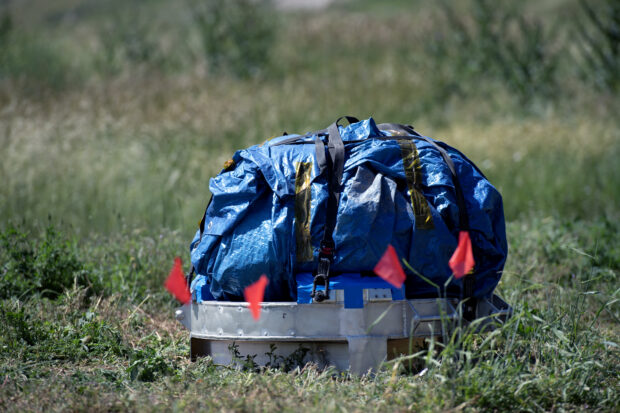On June 27, 2023, NASA conducted a major rehearsal for its groundbreaking OSIRIS-REx mission at Lockheed Martin in Littleton, Colorado. This mission aims to capture a sample from the surface of an asteroid, marking the first time a US mission has attempted this feat. The anticipated delivery of the asteroid sample from Bennu is scheduled for September 24, 2023. Scientists hope that studying this sample will provide valuable insights into the origins of organics and water that could have played a role in the development of life on Earth. The climactic end of this seven-year voyage is fast approaching, with a NASA capsule set to land in the Utah desert on Sunday, carrying the largest asteroid samples ever collected. This sample is expected to enhance our understanding of the formation of our solar system and the conditions that made Earth habitable. The descent of the Osiris-Rex probe through Earth’s atmosphere will be a perilous journey, but NASA is optimistic about achieving a soft landing around 9:00 a.m. local time. After collecting approximately nine ounces (250 grams) of dust from Bennu’s surface, even this small amount is expected to contribute significantly to our knowledge of asteroids that could potentially pose a threat to Earth. Furthermore, it will shed light on the earliest history of our solar system. This ambitious sample return mission marks a historic moment for NASA, described by NASA scientist Amy Simon as the most significant sample retrieval since the Apollo moon rocks. However, the safe return of the capsule requires a dangerous maneuver. It will release the capsule from an altitude of over 67,000 miles (108,000 kilometers), four hours before landing. The capsule’s fiery descent through the atmosphere will occur in the final 13 minutes, hurtling downwards at a speed of over 27,000 miles per hour and enduring temperatures up to 5,000 Fahrenheit (2,760 Celsius). Army sensors will monitor this rapid descent, which will be slowed down by two parachutes. If these parachutes fail, a hard landing may follow. NASA controllers have the option to abort the release if there is a risk of missing the designated landing zone. In such a scenario, the probe would continue its orbit around the sun, delaying the sample return until 2025. However, if all goes according to plan, once the tire-sized capsule touches down in Utah, a team in protective gear will airlift it by helicopter to a temporary clean room. This precaution is essential to avoid any contamination of the sample with desert sands and ensure accurate test results. The sample will be flown to NASA’s Johnson Space Center in Houston, Texas, on Monday. There, it will be opened in another clean room, and a meticulous process will begin lasting several days. NASA aims to announce its initial findings at a news conference on October 11. While the majority of the sample will be preserved for future studies, a quarter of it will be used immediately for experiments. Additionally, a small quantity of the sample will be shared with Japan and Canada, both partners in this mission. In 2020, Japan provided a few grains from the asteroid Ryugu, and earlier, in 2010, brought back a microscopic quantity from another asteroid. However, the sample from Bennu is significantly larger, offering greater opportunities for testing and analysis. Asteroids are composed of the original materials of the solar system, dating back 4.5 billion years, and have remained relatively unchanged. They provide important insights into the formation and evolution of the solar system. Scientists believe that asteroids and comets played a crucial role in delivering organic material and water to Earth, enabling the development of life. Bennu, with its diameter of 1,640 feet, is believed to be rich in carbon and contains water molecules locked in minerals. Researchers were surprised by the density of the soil on Bennu’s surface, which was unexpectedly low. This information could prove valuable for future endeavors. Although there is a remote chance of Bennu colliding with Earth in 2182, NASA has already demonstrated its ability to alter the course of an asteroid by crashing a probe into it during a test. This mission may serve as a blueprint for future efforts in planetary defense.
Denial of responsibility! Vigour Times is an automatic aggregator of Global media. In each content, the hyperlink to the primary source is specified. All trademarks belong to their rightful owners, and all materials to their authors. For any complaint, please reach us at – [email protected]. We will take necessary action within 24 hours.


